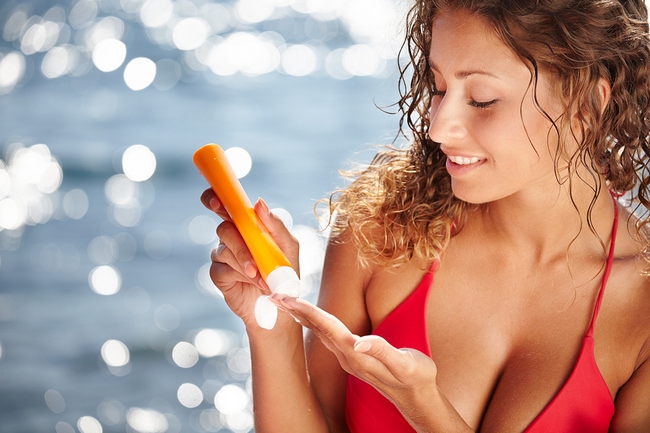- Make It Yourself Lavender Heart-Shaped Bath Bombs!
- 20 Things You Never Knew About “Down There”
- 12 Best Foods For Those Suffering From Arthritis Pain
- 12 Personal Hygiene Mistakes Almost Everyone Makes (Mom Never Told You About #4!)
- 15 Medicinal Plants And Herbs From The Cherokee People
- 12 Mind-Blowing Benefits Of Drinking Coconut Water During Pregnancy
- 12 Outstanding Winter Foods That Won’t Fatten You Up Like A Christmas Turkey
Besides Ourselves, What else is Sunblock Poisoning?

Photo credit: bigstock
Summer is just about over but the sun is still strong so people are still diligently using sunscreen. You have probably already read about how many of the ingredients in sunscreen are toxic and can cause users serious health problems, but did you know that if you use those toxic types of sunscreen and you go into the ocean, lake, or river, that it washes off you and goes into our waters? This means that these poisonous chemicals are going into our waters and marine life and causing unbelievable damage.
Sunscreens are often made with chemicals such as zinc oxide, titanium oxide, and parabens, which do block ultraviolet light from the sun from reaching our skins, but in the last few decades, many manufacturers are now using these same ingredients but in nanoparticles. This makes sunscreens less greasy and easier to apply, but their environmental and health issues are virtually unknown.
Research done previously showed that, in sunlight, nanoparticles of titanium dioxide could react with water to make potentially toxic chemicals such as hydrogen peroxide. Hydrogen peroxide, in large enough amounts, are known to be deadly to a type of algae known as phytoplankton, which, if you remember from your high school days, forms the base of the oceans food chain, as well as producing much of the planets oxygen.
Sunscreen chemicals have been found in numerous water sources, but especially in our oceans, and there is also evidence that these chemicals are causing the bleaching effects of coral reefs in tropical parts of the world.
Algae normally live on coral and gives the coral food, as well as its color. Elevated water temperatures and water pollution can cause the coral to die. When it dies, it loses its color, leaving the reefs white in appearance, almost as if someone bleached it.
Continue to Page 2

































